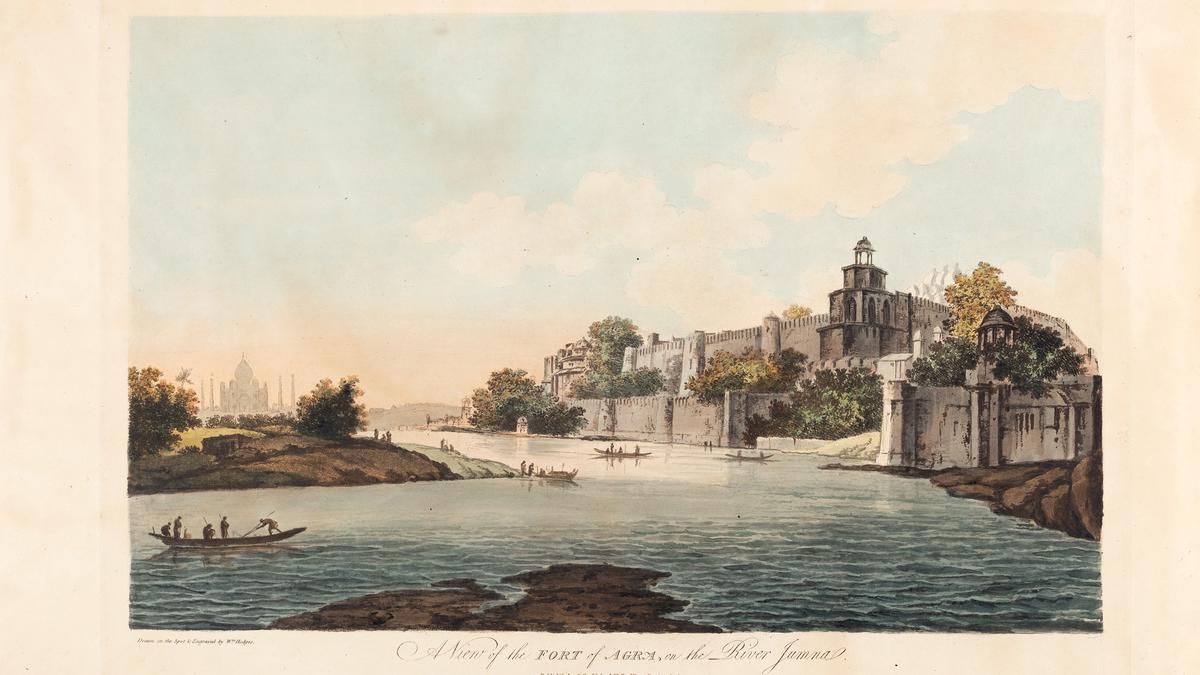
Discover colonial India through the paintings of William Hodges
The Hindu
Discover the first-ever exhibition of William Hodges' aquatints showcasing India's architectural landscapes and cultural history at DAG, Delhi.
A View of the Fort of Agra on the River Jumna painted by William Hodges in 1786 shows the Taj Mahal as a wispy outline lost in an aquatint dream. In the foreground, men propel boats on the Yamuna, people stand on its sandy banks, and beyond the dense shrubbery that crowds it rises the ramparts of Agra fort, menacing and vast.
For many a Briton in the late 1700s, the painting perhaps served as the first glimpse of India’s most famous architectural landscape. It was nearly two hundred years after the East India Company had first sailed to India’s shores and begun to trade and rule that William Hodges came to the subcontinent as a pioneer of sorts to “remedy Europe’s visual ignorance of India”.
DAG, Delhi, showcases the first-ever exhibition of the full set of 48 aquatints of Select Views in India engraved by Hodges. Curated by Giles Tillotson, senior VP, Exhibitions, DAG, the show accompanied by a book, traces Hodges journey though Bengal, Bihar and the United Provinces, freezing in colours of dun, green and blue, the India of the day.
Hodges had accompanied explorer James Cook on his second voyage to the Pacific islands, capturing its locations and people in landscape painting. “His travels in the South Pacific by ship alerted him to atmospheric effects. He also learnt a lot about unfamiliar civilisations,” says Giles.
Spurred by a sense of adventure for the unfamiliar, Hodges journeyed East and met Warren Hastings, then Governor-General, on his voyage to Calcutta in 1780. It was a time when the Company was flexing its military muscle — the First Anglo-Maratha war was on and Hastings ensured a safe passage for Hodges as he wove his way around the country and in and out of battle zones.
Travelling westwards, Hodges sailed up the wide-rolling Hooghly and the Ganga to Murshidabad and Rajmahal, through Benares and Allahabad, to Agra and Gwalior, pausing along the way to capture vignettes of life and monuments, thus becoming the first professional British painter to put together an extensive corpus on colonial India. “Hodges deployed the English aesthetic known as the Picturesque, in which he was trained. This tends to emphasise ruin and irregularity, avoiding symmetry and order. So the vision of India suggests a place in decline,” says Giles.
The symbols of British India — pennants and red coats, bonnets and pith helmets — are ignored in Hodges’ paintings. Instead, he turns his brush to capturing cities and towns that once were stars during the heyday of Mughal rule. “Hodges was little interested in British India. His aim was to show his compatriots what India’s own civilisations and landscape looked like,” says Giles.











